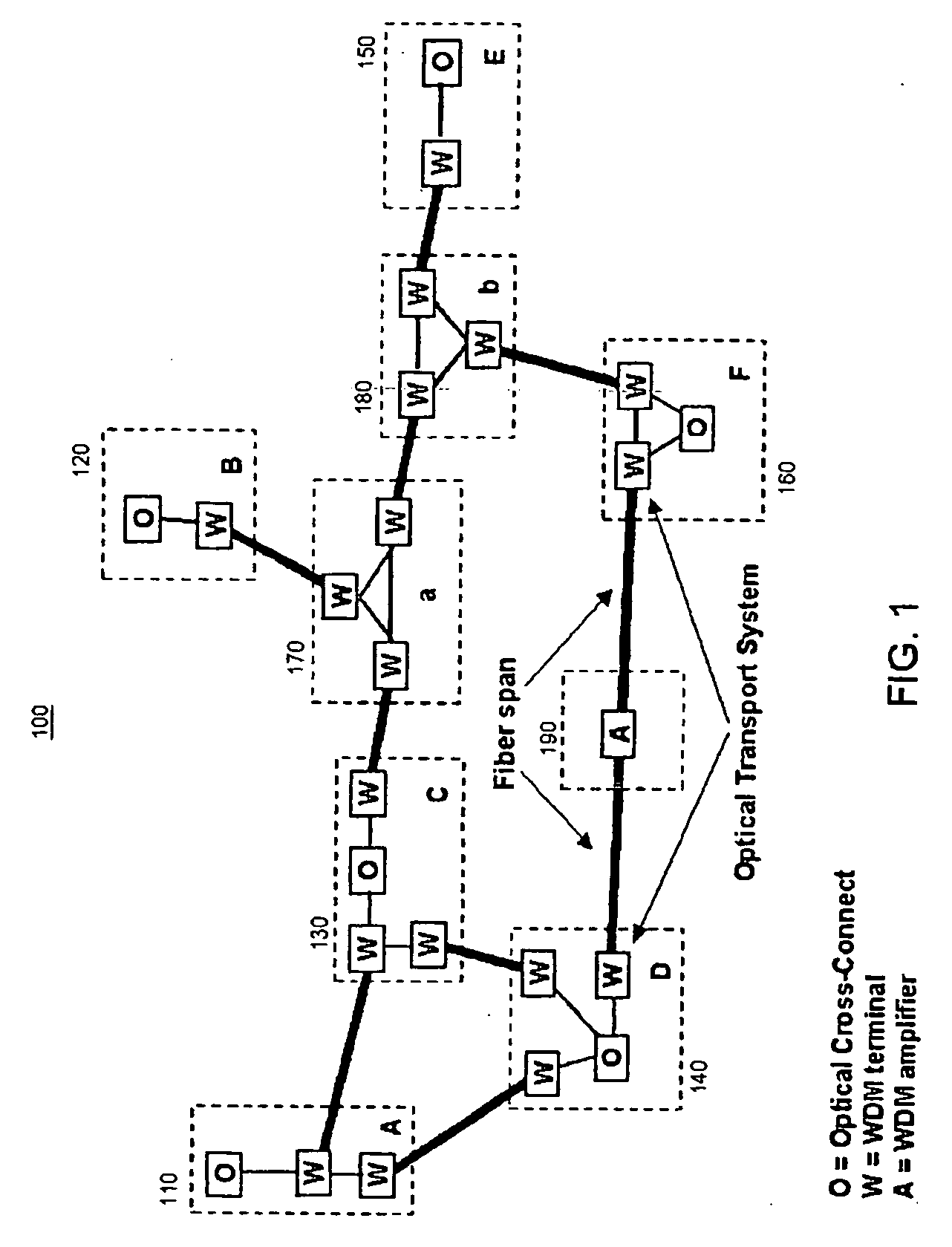Method for selecting a restoration path in a mesh network
a mesh network and restoration path technology, applied in the field of telecommunications networks, can solve the problems of inefficiency of the single-band capacity, and address the need for fast failure restoration in such networks, and achieve the effect of reducing the amount of signaling overhead and being practical and flexibl
- Summary
- Abstract
- Description
- Claims
- Application Information
AI Technical Summary
Benefits of technology
Problems solved by technology
Method used
Image
Examples
Embodiment Construction
[0012]FIG. 1 is a mesh network 100, illustratively an optical network, organized into a general topology of links and nodes 110, . . . , 190, in contrast to a rigid ring or chain or other such structure. Although depicted in FIG. 1 and described herein particularly in the context of optical networking, the invention can be readily appreciated by those of ordinary skill in the art to apply to cross-connect technologies in general, e.g. Gigabit Ethernet, OXCs with electrical fabrics, etc.
[0013] With reference to FIG. 1, optical mesh network 100 comprises optical cross-connects (OXCs) and optical transport systems (OTSs). The optical cross-connects (depicted as boxes labeled “O” in FIG. 1) provide end-to-end optical connections, sometimes colloquially referred to as “lightpaths.” The optical transport systems in FIG. 1 comprise pairs of bidirectional Wavelength Division Multiplexer (WDM) terminals (depicted as boxes labeled “W”) and amplifiers at intermediate locations where needed (d...
PUM
 Login to View More
Login to View More Abstract
Description
Claims
Application Information
 Login to View More
Login to View More - R&D
- Intellectual Property
- Life Sciences
- Materials
- Tech Scout
- Unparalleled Data Quality
- Higher Quality Content
- 60% Fewer Hallucinations
Browse by: Latest US Patents, China's latest patents, Technical Efficacy Thesaurus, Application Domain, Technology Topic, Popular Technical Reports.
© 2025 PatSnap. All rights reserved.Legal|Privacy policy|Modern Slavery Act Transparency Statement|Sitemap|About US| Contact US: help@patsnap.com



